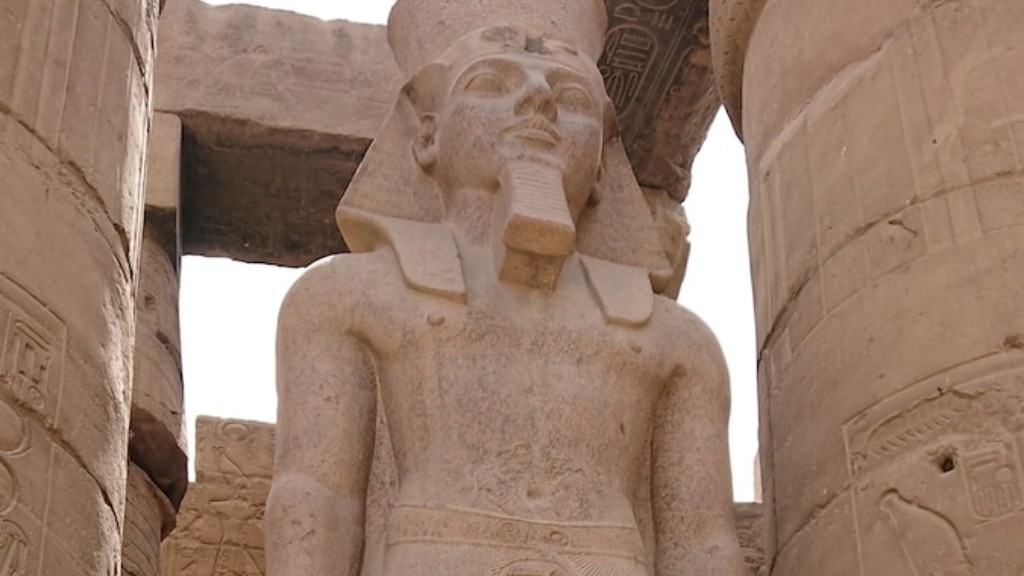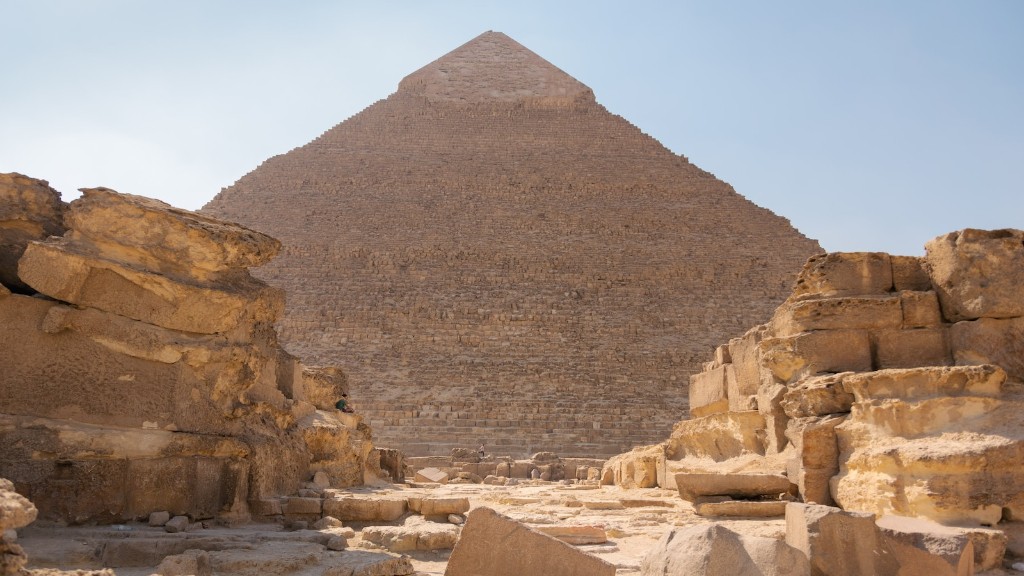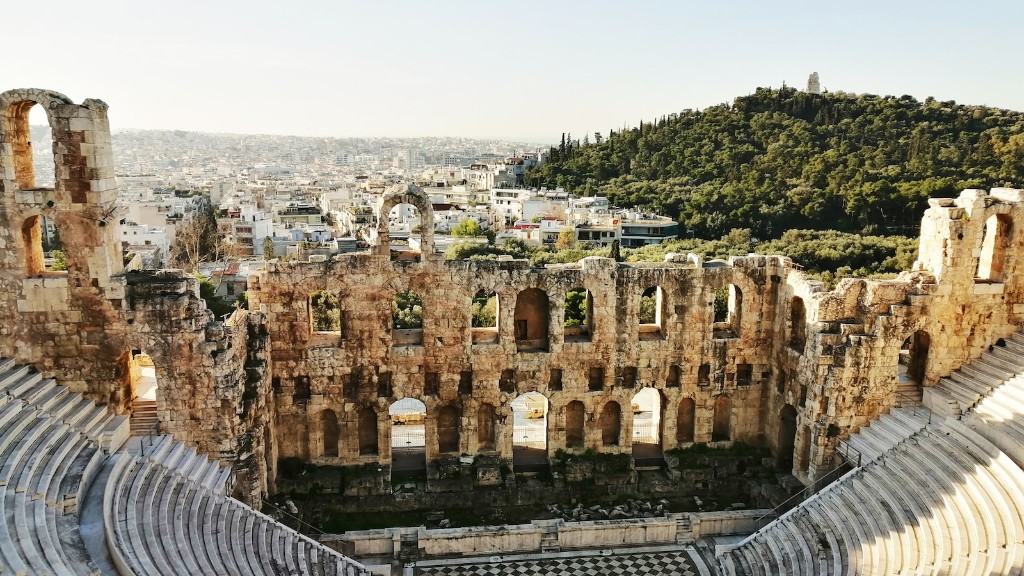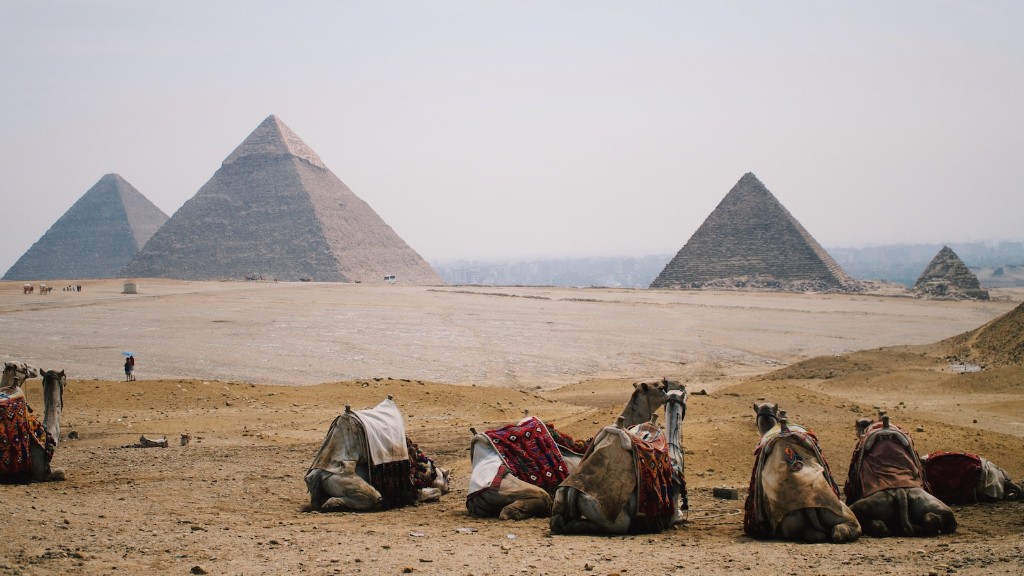Artifacts from Ancient Egypt
The artifacts from Ancient Egypt have fascinated people around the world for centuries. From mummies to hieroglyphics, these relics of the past are not only historically and culturally important, but remain shrouded in mystery and intrigue. Ancient Egyptians left behind many relics, which shed light on their daily lives and beliefs.
More than two hundred thousand artifacts have been recovered from Ancient Egypt. These artifacts range from large works of art to everyday items. Statues of gods and pharaohs, carved stone panels and furniture, jewelry, and tools have all been preserved. Tombs and burial chambers have also been uncovered, providing an insight into Egyptian funerary practices.
Many of these artifacts were covered in hieroglyphics. This ancient form of writing was used by the Ancient Egyptians. Hieroglyphs are symbols which represent people, places, and objects, and could be used to express thoughts and ideas. They were often written on stone or metal surfaces and could tell stories or pass on religious beliefs.
The famous Rosetta Stone is one of the most significant artifacts of Ancient Egypt. It was discovered in 1799 by French soldiers, and is an intricately carved piece of dark gray granite. It contains three versions of a royal decree written in hieroglyphs, demotic script, and Greek, allowing scholars to translate the inscriptions and unlock the mysteries of the ancient Egyptian civilization.
The pyramids of Giza are perhaps the most iconic example of Egyptian architecture. Erected by Pharaoh Khufu and his successors, these large stone structures were designed to house the bodies of pharaohs and their families. They now stand as a testament to the ambition and engineering capabilities of the Ancient Egyptians.
In addition to large works of art, a variety of everyday tools have been found in digs throughout Egypt. These artifacts provide an insight into the lives of the ancient Egyptians. Bone needles, fishing hooks, hairpins, and combs have all been recovered, alongside pottery, jewelry, and weapons.
The artifacts from Ancient Egypt provide us with an invaluable insight into the lives of the people who lived thousands of years ago. They tell us about their beliefs, their way of life, their attitudes, and much more. By preserving these artifacts for future generations, we are able to gain a better understanding of our shared history.
Mummification
One of the most mysterious artifacts of ancient Egypt is mummification. This practice involved preserving the dead, and was a vital part of religious beliefs and funerary customs in ancient Egypt. Most mummies have been found wrapped in cloth or linen and the body had been treated with preservative oils and substances like natron and myrrh to prevent decay. The internal organs were removed and preserved separately. The organs were placed in canopic jars, which were decorated with the heads of gods and goddesses.
Mummification was believed to ensure that the dead could enter the afterlife safely. The bodies were carefully embalmed in order to prevent decay, and were often decorated with jewelry and other items. They were then placed in a sarcophagus, which was often inscribed with elaborate hieroglyphs and images of gods and kings.
The mummies of ancient Egypt continue to fascinate people to this day. Scholars have studied the mummies to gain an insight into how the Ancient Egyptians lived. There have also been many tales about the discovery and unwrapping of mummies, which has only added to the mystery and intrigue surrounding them.
Religious Artifacts
Religious artifacts from Ancient Egypt have been found in tombs and temples. Many of these artifacts are designed to honor the gods and goddesses, such as statues, amulets, jewelry, and figurines. These artifacts are designed to invoke the power of the gods, and often feature images of animal-headed gods and hieroglyphs.
Temples also held important artifacts related to religious ceremonies. For example, incense burners were used in religious ceremonies to honor the gods. Temples also contained statues of gods and goddesses, and some of these were large enough that they could be seen from outside the temple walls.
In addition to material artifacts, religious texts were also very important in Ancient Egypt. These texts contained hymns, prayers, spells, and stories, all of which were believed to invoke the gods. These texts were often inscribed on stone or inscribed on papyrus scrolls. The Book of the Dead was particularly important, as it provided instructions to ensure a safe passage to the afterlife.
Funerary Rituals
Funerary rituals were extremely important in Ancient Egypt. On the death of a Pharaoh, the body was mummified and placed in a sarcophagus with various items such as jewelry and other personal effects. Temples and tombs were then constructed to honor the deceased. These tombs were often inscribed with hieroglyphics and decorated with statues and paintings that depicted the deceased’s journey to the afterlife.
These artifacts provide insight into the beliefs and funerary practices of the Ancient Egyptians. For example, funerary masks were often placed on mummies to protect them from evil forces, while statues of gods and animals were placed in tombs to protect the deceased from harm. Other artifacts found in tombs include jewelry, tools, food, and even games, which were placed to ensure that the deceased had whatever they need in the afterlife.
The Ancient Egyptians believed that the deceased had the power to influence events in the living world. As such, funerary artifacts were very important, as they were believed to help the deceased through their journey to the afterlife.
Conclusion
Ancient Egypt was a fascinating and complex civilization that has left behind many relics and artifacts. From statues and figurines to mummies and funerary masks, these relics tell us about the lives of the ancient Egyptians and their beliefs. They also provide clues about the engineering and construction capabilities of the civilization. By studying these artifacts, we can gain a better understanding of what life was like for the people of Ancient Egypt.




